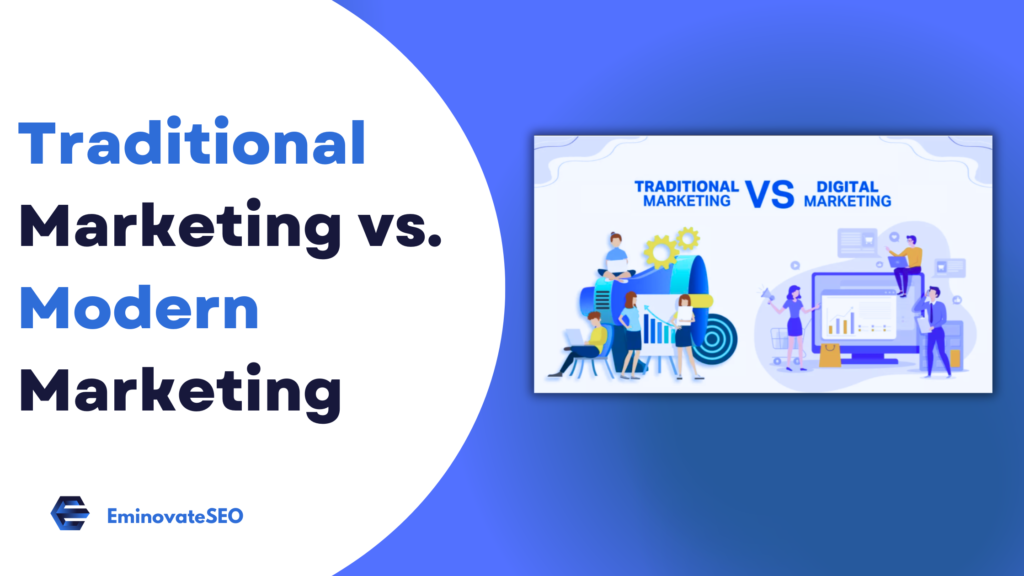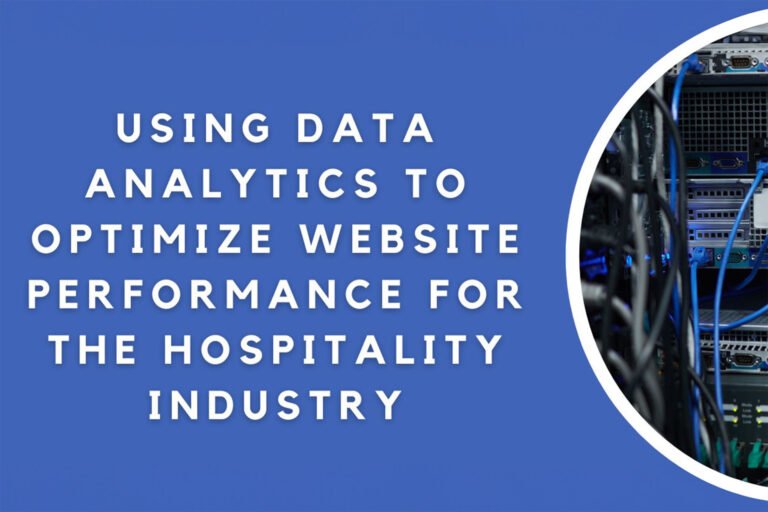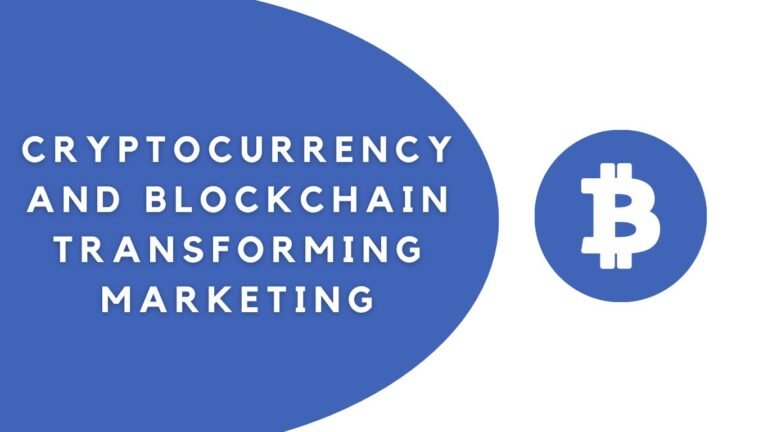As technology continues evolving, so does how businesses reach their customers. From traditional marketing tactics like print and television advertising to modern approaches such as digital and social media, companies can use a wide range of techniques to create interest in their services or products. In this blog post, we’ll look at how traditional vs. modern marketing has evolved and discuss the major impact each has on business today. Let’s get started!
Traditional Marketing
Traditional marketing is a tried method of reaching a wide audience. Billboards and print ads have been used for years and are still a mainstay of many advertising campaigns. It might be easy to believe that conventional approaches are out-of-date because digital marketing has received so much attention lately. But, the truth is that many consumers still like physical advertising. For instance, certain print publications like magazines and newspapers have a sizable readership today. Even though traditional marketing may not be as effective as digital techniques for focusing on a certain demographic, it is a useful component of any marketing plan.
Modern marketing
Being competitive is the key to modern marketing. Marketing strategies are changing to reflect how people connect with brands and organizations in the age of the digital revolution. How people interact with one another and consume media impacts modern marketing. There are many methods to meaningfully connect with your target audience, from social media campaigns and email newsletters to mobile applications and website optimization. Getting your name out there is no longer enough for marketing; you must also establish a relationship with your audience and leave a positive impression.

The evolution of marketing from traditional to modern
Marketing has gone from conventional print and radio advertising strategies to influencer marketing and social media campaigns. Marketers have adjusted to new platforms and customer behavior due to the internet and the advent of technology. Companies can now reach certain audiences with tailored messaging thanks to the move from mass marketing to targeted marketing.
The evolution of marketing has blurred the lines between advertising and entertainment, with brands creating informative, entertaining, and shareable content. As technology continues to evolve, one can only imagine what exciting advancements lie ahead for the world of marketing.
Traditional Marketing
Historical perspective
Traditional marketing refers to ancient civilizations, where traders relied on word-of-mouth, town criers, and simple signage to promote goods and services. As societies developed, so did marketing techniques, with the advent of print media and the Industrial Revolution providing new opportunities for businesses to reach larger audiences.
Traditional marketing underwent significant milestones, such as the invention of the printing press in the 15th century, which facilitated the distribution of printed advertisements. The 20th century saw the expansion of mass media, with the rise of radio and television enabling brands to advertise to a national and even global audience. These developments laid the foundation for the one-way communication model prevalent in traditional marketing.
Characteristics of traditional marketing
Mass media advertising
Traditional marketing relied heavily on mass media channels like newspapers, magazines, radio, and television to transmit marketing messages to a broad audience. These channels offered limited targeting capabilities compared to the precision of modern marketing strategies.
One-way communication
Traditional marketing practiced one-way communication, where brands conveyed their messages to consumers without expecting immediate or interactive responses. This unidirectional approach limited the ability to engage in meaningful dialogues with the audience.
Interruption-based marketing
Traditional marketing often interrupted consumers’ daily routines. For example, TV commercials interrupt television shows, and print ads interrupt a newspaper or magazine reading. This interruption-based approach was less subtle and more intrusive than modern marketing’s permission-based strategies.
Limited data collection
Traditional marketing relied on crude methods for collecting consumer data. Surveys, focus groups, and basic demographic information were familiar data sources, but they lacked the depth and precision of data collection tools available in modern marketing.
Traditional marketing strategies
Print advertising: Print advertising involves placing ads in newspapers, magazines, brochures, and billboards. This approach allowed businesses to target specific publications based on their audience but lacked digital channels’ immediate interactivity and tracking capabilities.
Television and radio advertising: Television and radio commercials were staples of traditional marketing, enabling brands to reach a wide audience. However, advertising time slots were often expensive, and measuring the effectiveness of these campaigns was challenging.
Direct mail marketing: Direct mail marketing involves sending physical promotional materials, such as postcards, catalogs, and flyers, directly to consumers’ mailboxes. This strategy allowed for localized targeting but generated substantial paper waste.
Telemarketing: Telemarketing relies on phone calls to potential customers, attempting to engage them in sales conversations. While it provided a direct line to consumers, it was often perceived as intrusive and led to the development of “Do Not Call” lists.
Advantages and disadvantages
Pros of traditional marketing
Traditional marketing strategies effectively reached broad audiences, particularly before the digital age. They built brand awareness and credibility through established media outlets and were often considered more trustworthy by older generations.
Cons of traditional marketing
Traditional marketing had limitations in terms of cost-effectiveness, measurement of ROI, and targeting precision. It could be intrusive and less adaptable to changing consumer preferences. Additionally, it needed more real-time engagement and data-driven decision-making capabilities that modern marketing offers.
Modern Marketing
The digital revolution
Modern marketing emerged after the digital revolution, transforming how businesses connect with consumers. The expansion of personal computers and the internet created new avenues for reaching and engaging audiences. This revolutionized marketing messages, from static print ads to dynamic, interactive online campaigns.
The widespread adoption of the internet and social media platforms played a pivotal role in modern marketing. These platforms allowed businesses to engage with consumers globally, enabling real-time communication, user-generated content, and unprecedented data collection.
Characteristics of modern marketing
Digital and online focus
Modern marketing is inherently digital and online-focused. It leverages various online channels and platforms, such as websites, social media, search engines, and mobile apps, to reach and engage target audiences. This digital emphasis enables businesses to connect with consumers where they spend a significant portion of their time—online.
Two-way communication
Unlike traditional marketing’s one-way communication model, modern marketing encourages two-way interaction. Brands can engage in customer conversations, responding to inquiries, feedback, and comments. This interactive approach builds stronger relationships and allows brands to understand better and cater to consumer needs and preferences.
Permission-based marketing
Modern marketing prioritizes permission-based strategies, where consumers willingly opt in to receive marketing communications. Email newsletters, SMS alerts, and push notifications are channels requiring consumers’ consent. This approach respects consumers’ preferences and privacy, resulting in more engaged and receptive audiences.
Data-driven decision-making
Data plays a central role in modern marketing. Businesses collect, analyze, and use data for marketing strategies. This data-driven approach enables precise targeting, personalization, and the measurement of campaign effectiveness. It empowers marketers to make informed decisions, optimize campaigns in real time, and adapt to changing market dynamics.
Modern marketing strategies
Content marketing: Content marketing involves creating and distributing valuable, relevant, and informative content to attract and engage target audiences. This strategy positions brands as industry experts builds trust, and drives organic traffic through blogs, videos, infographics, and more.
Social media marketing: Social media marketing harnesses the power of social platforms to connect with consumers, build brand awareness, and drive engagement. Marketers leverage platforms like Facebook, Instagram, Twitter, and LinkedIn to share content, run targeted ads, and foster communities of loyal followers.
Influencer marketing: Influencer marketing leverages individuals with substantial online followings to promote products or services. Influencers, often experts or celebrities in specific niches, can sway consumer opinions and generate authentic endorsements for brands.
Email marketing: Email marketing remains a highly effective tool for reaching and nurturing leads and customers. Businesses use email to send personalized content, product recommendations, and promotional offers, helping to retain and re-engage their audience.
Advantages and disadvantages
Pros of modern marketing
Modern marketing offers unparalleled reach, targeting precision, and cost-effectiveness. It enables real-time campaign performance tracking, facilitates personalized experiences, and builds customer loyalty through interactive engagement. The data-driven nature of modern marketing allows for continuous optimization and adaptation to changing market dynamics.
Cons of modern marketing
While modern marketing provides numerous benefits, it also presents challenges. Consumers may feel overwhelmed by the sheer volume of digital marketing messages, leading to ad fatigue. Also, the collection and use of personal data raise privacy concerns, necessitating strict compliance with data protection regulations like GDPR. The fast-paced nature of the digital landscape requires marketers to stay updated and agile in their strategies, which can be demanding and resource-intensive.
Conclusion
The evolution of marketing has changed drastically over the years, from traditional to modern strategies. Traditional marketing can no longer keep up with the increasing needs of brands and companies, as they rely on customer feedback and insights that today’s digital age enables us to track quickly and efficiently. By tapping into these modern strategies, focusing on personalization of content, and providing excellent customer service, businesses can create ongoing awareness for their brand that will lead to increased profitability in the long run. Now is the time for businesses to invest resources and effort into modern marketing strategies to remain competitive in this ever-changing market.




